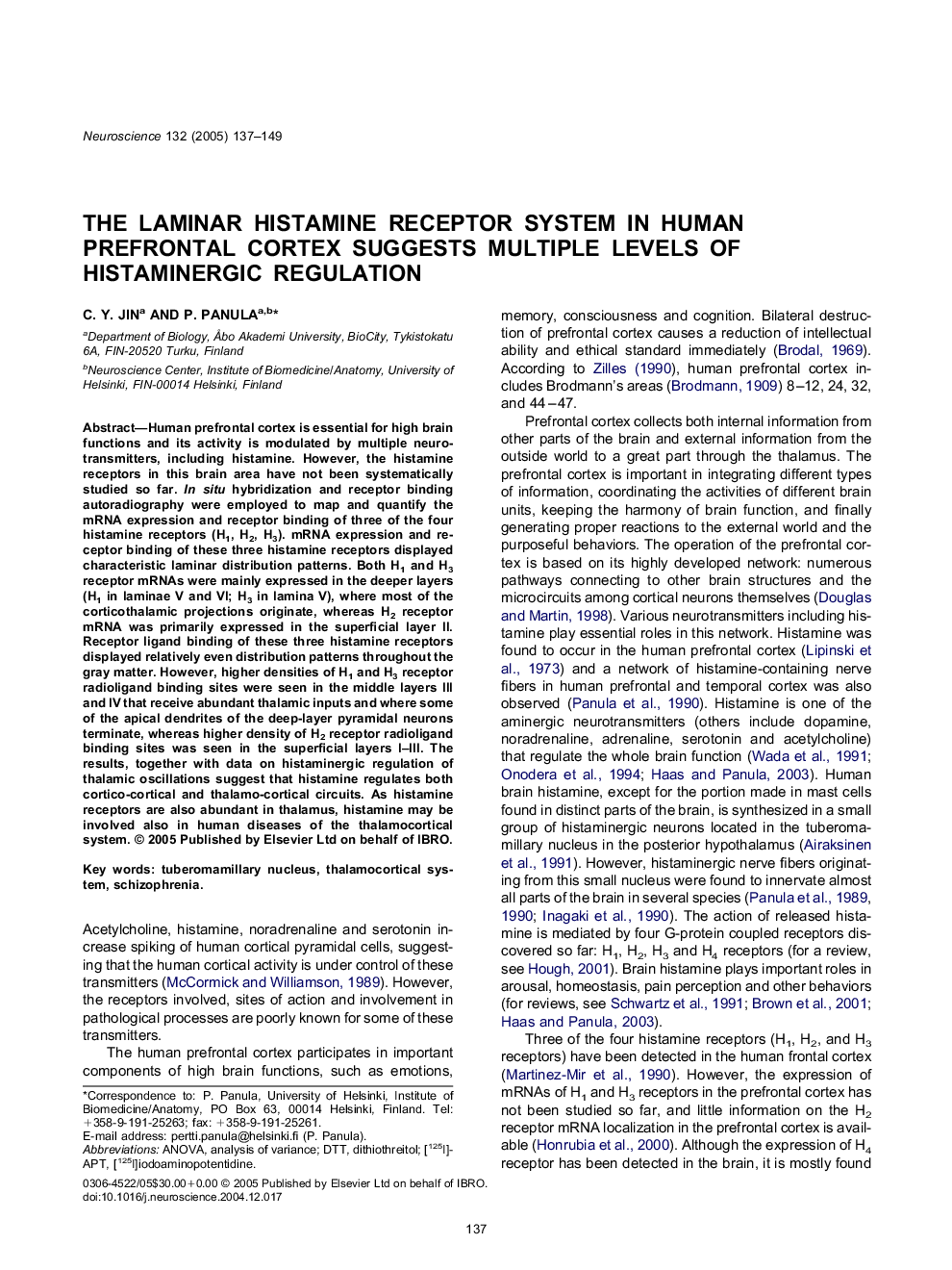| Article ID | Journal | Published Year | Pages | File Type |
|---|---|---|---|---|
| 9425955 | Neuroscience | 2005 | 13 Pages |
Abstract
Human prefrontal cortex is essential for high brain functions and its activity is modulated by multiple neurotransmitters, including histamine. However, the histamine receptors in this brain area have not been systematically studied so far. In situ hybridization and receptor binding autoradiography were employed to map and quantify the mRNA expression and receptor binding of three of the four histamine receptors (H1, H2, H3). mRNA expression and receptor binding of these three histamine receptors displayed characteristic laminar distribution patterns. Both H1 and H3 receptor mRNAs were mainly expressed in the deeper layers (H1 in laminae V and VI; H3 in lamina V), where most of the corticothalamic projections originate, whereas H2 receptor mRNA was primarily expressed in the superficial layer II. Receptor ligand binding of these three histamine receptors displayed relatively even distribution patterns throughout the gray matter. However, higher densities of H1 and H3 receptor radioligand binding sites were seen in the middle layers III and IV that receive abundant thalamic inputs and where some of the apical dendrites of the deep-layer pyramidal neurons terminate, whereas higher density of H2 receptor radioligand binding sites was seen in the superficial layers I-III. The results, together with data on histaminergic regulation of thalamic oscillations suggest that histamine regulates both cortico-cortical and thalamo-cortical circuits. As histamine receptors are also abundant in thalamus, histamine may be involved also in human diseases of the thalamocortical system.
Keywords
Related Topics
Life Sciences
Neuroscience
Neuroscience (General)
Authors
C.Y. Jin, P. Panula,
